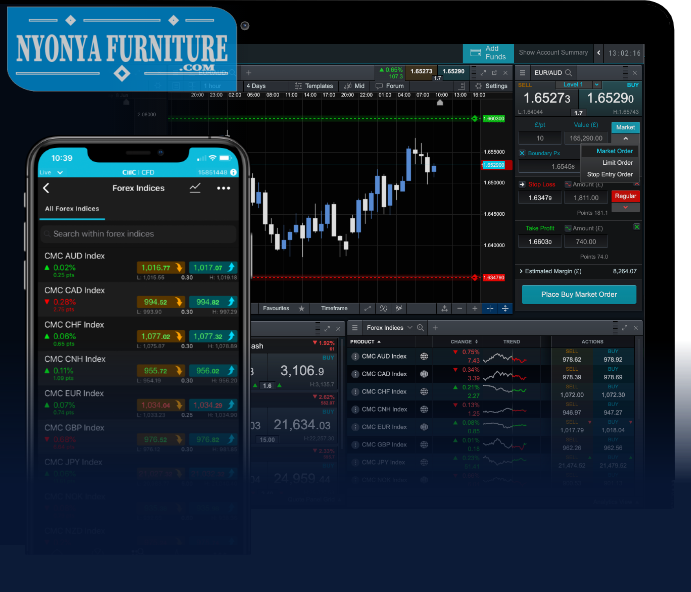
If you’re interested in financial markets, it’s likely you’ve come across trading in forex trader-maroc.com and the fascinating realm of Forex trading. Forex, or foreign exchange, represents one of the most dynamic and accessible financial markets in the world. With a daily trading volume exceeding $6 trillion, it offers countless opportunities for profit—but also significant risks. In this article, we will explore the essential aspects of Forex trading, techniques to improve your trading skills, and how to navigate the complexities of the market successfully.
. . .
Understanding Forex Trading
The Forex market operates on a decentralized basis, meaning that transactions occur directly between parties, typically facilitated by brokers. The main purpose of this market is to assist businesses, investors, governments, and traders in converting one currency into another, making it a vital component of international trade.
Currencies are quoted in pairs, such as EUR/USD or GBP/JPY, indicating the exchange rate between them. For instance, if the EUR/USD pair is quoted at 1.15, it means that one Euro can be exchanged for 1.15 US dollars.
Key Concepts in Forex Trading
1. Currency Pairs
Currency pairs are divided into three categories: major, minor, and exotic. Major pairs involve the most traded currencies (e.g., USD, EUR, JPY), while minor pairs consist of less-traded currencies (e.g., AUD, NZD). Exotic pairs include one major currency paired with a currency from a developing economy.
2. Pips and Spreads
A pip is the smallest price movement that a currency pair can make based on market convention. Most pairs are quoted to four decimal places, where one pip equals 0.0001. Understanding pips is crucial for calculating potential gains and losses. The spread, on the other hand, is the difference between the bid and ask price. It indicates the broker’s commission for facilitating trades.
3. Leverage
One of the most attractive features of Forex trading is leverage. Leverage allows traders to control larger positions with a smaller amount of capital. For example, with a leverage of 100:1, a trader can control $100,000 in a currency pair with just $1,000. While leverage can amplify profits, it can just as easily magnify losses, making risk management essential.

Strategies for Successful Forex Trading
While the Forex market offers ample opportunities, developing a solid strategy is crucial. Here are some commonly used strategies:
1. Scalping
Scalping involves making numerous trades throughout the day to earn small profits from minor price movements. Scalpers rely on high leverage and short holding periods to make their gains. This strategy requires quick decision-making and excellent technical analysis skills.
2. Day Trading
Day traders enter and exit trades within the same day, capitalizing on intraday price movements. Unlike scalpers, day traders aim to capture bigger price swings and often use more technical indicators to guide their decisions.
3. Swing Trading
Swing traders hold positions for several days or weeks, seeking to profit from broader price movements. This strategy requires less time commitment than scalping or day trading and often involves a mix of technical and fundamental analysis.
4. Position Trading
Position traders take a long-term approach, holding trades for weeks, months, or even years. This strategy emphasizes a thorough analysis of the market fundamentals and economic indicators, making it less risky for those who prefer a more hands-off trading style.
Risk Management in Forex Trading

Proper risk management is critical for Forex traders. Here are some fundamental principles:
- Set Stop-Loss Orders: A stop-loss is a pre-determined point where a trader exits a losing position to minimize losses.
- Use Position Sizing: Determining the appropriate size of each trade helps manage risk. Traders typically risk a small percentage of their total capital on any given trade.
- Diversify Your Portfolio: Spreading your investments across different currency pairs can reduce risk.
- Maintain a Risk-Reward Ratio: It is advisable to aim for a risk-reward ratio of at least 1:2, meaning the potential profit should be at least twice the potential loss.
The Role of Technical and Fundamental Analysis
Both technical and fundamental analysis are pivotal for making informed trading decisions in the Forex market.
Technical Analysis
This involves analyzing historical price movement through charts and indicators, enabling traders to identify trends and potential reversal points. Common tools include moving averages, Relative Strength Index (RSI), and Bollinger Bands.
Fundamental Analysis
Fundamental analysis considers economic indicators, interest rates, inflation, and geopolitical events. Understanding how these factors influence currency values can help traders make better long-term decisions.
Conclusion: The Future of Forex Trading
The Forex market is continuously evolving due to advancements in technology, regulatory changes, and global economic shifts. For individuals looking to enter this arena, education and practice are crucial. Using demo accounts, educational resources, and following expert traders can enhance your learning journey.
In conclusion, while Forex trading can be a lucrative endeavor, it requires dedication, research, and continuous improvement. Whether you aspire to be a scalper or a position trader, embracing a solid strategy and sound risk management practices will set you on the path to success in this exciting market.






